 |
Langley Research CenterTurbulence Modeling Resource |
Jump to: SA Results, SA-QCR2000 Results, SSTm Results, SSG/LRR-RSM-w2012 Results, Wilcox2006-klim-m Results
Return to: Fully-Developed Channel Flow Validation Intro Page
Return to: Turbulence Modeling Resource Home Page
2D Fully-Developed Channel Flow at High Reynolds Number Validation Case
K-kL-MEAH2015 Model Results
Link to K-kL-MEAH2015 equations
Above k-kL-MEAH2015 results are from CFL3D on the finest 161x513 grid.
CFL3D used freestream turbulence intensity=0.039% and freestream turbulent viscosity (relative to laminar)=0.009
(additional details can be found in the CFL3D User's Manual, Appendix H).
Please read note 5 on Notes on running CFD page.
Note that these are compressible code results; results will be somewhat different for incompressible codes.
In fact, for incompressible flow, the Cf and v*/Uref should become constant (moving downstream) rather
than slowly linearly increasing as shown here.
Note that the quantity v* (as defined in
White, F. M., Viscous Fluid Flow, McGraw-Hill, New York, 1974, pp. 471-474) is often referred to as u_tau.
Note also that Uref used in the above plots is not bulk velocity, but rather
the velocity at the reference position upstream where M=0.2.
The density (used to compute Cf) is also referenced there.
Results are assumed to be sufficiently "fully developed" by
x=500. Looking at the "Karman Measure" (KM), the value of
"kappa" produced by this turbulence model is close to 0.410 over much of the log layer.
Because k-kL-MEAH2015 is a linear (Boussinesq) model, there is essentially no separation between u'u', v'v', and w'w'.
CFL3D results are given here:
kklmeah_cf_vs_x_cfl3d.dat,
kklmeah_utau_vs_x_cfl3d.dat,
kklmeah_u_cfl3d.dat,
kklmeah_u+y+KM_cfl3d.dat,
kklmeah_mut_cfl3d.dat,
kklmeah_plus_cfl3d.dat.
A typical CFL3D input file is:
kklmeah_cfl3d_typical.inp.
Jump to: SA Results,
SA-QCR2000 Results,
SSTm Results,
SSG/LRR-RSM-w2012 Results,
Wilcox2006-klim-m Results Return to: Fully-Developed Channel Flow Validation Intro Page Return to: Turbulence Modeling Resource Home Page
Recent significant updates: Responsible NASA Official:
Ethan Vogel


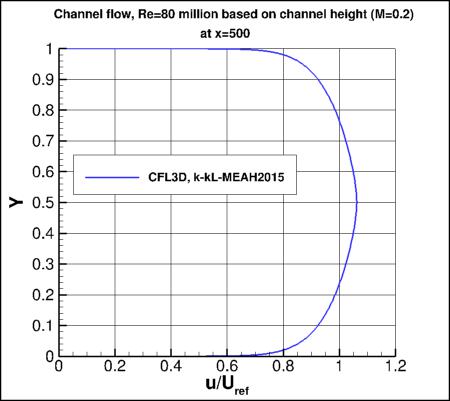
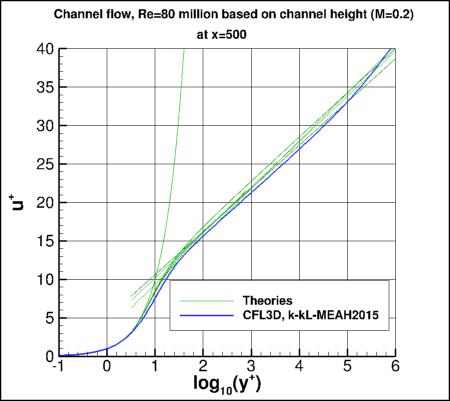
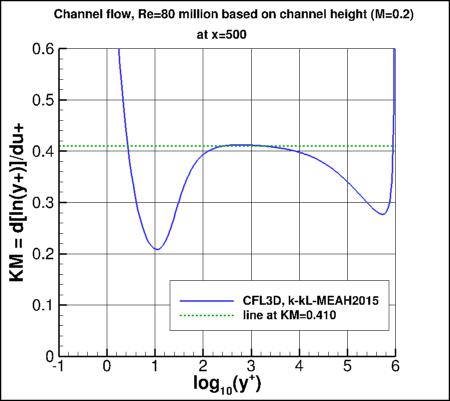

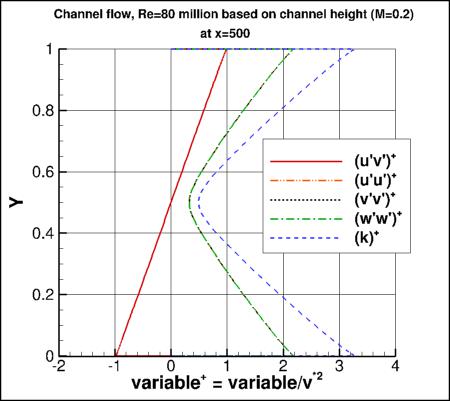
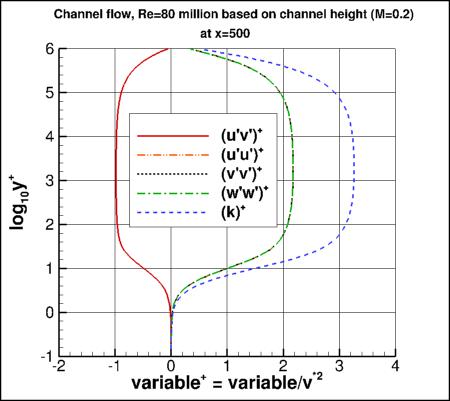
02/01/2022 - added mention of expected results for incompressible flow
Page Curator:
Clark Pederson
Last Updated: 02/01/2022